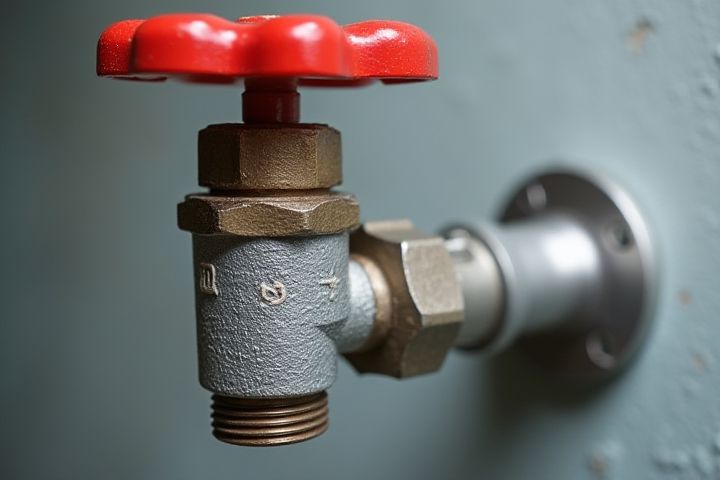
Maintaining house plumbing is essential for ensuring efficient water flow and preventing costly repairs. You should inspect your plumbing system at least once a year, looking for leaks, corrosion, and signs of wear in pipes and fixtures. Regularly cleaning drains can help prevent clogs, and consider scheduling a professional inspection every 1 to 2 years to address potential issues before they escalate. Winter is especially critical, as frozen pipes can burst, so you should check insulation and heating systems ahead of the cold months. By keeping a proactive maintenance schedule, you enhance the longevity of your plumbing and safeguard your home's water supply system.
How Often To Maintain House Plumbing
Schedule annual inspections.
House plumbing requires annual inspections to ensure optimal functionality and prevent costly repairs. Regular check-ups can help identify issues such as leaks, corrosion, or clogs early on, potentially saving you thousands in emergency repairs. On average, a typical home has around 50 plumbing fixtures, which underscores the importance of scheduling maintenance. You can enhance your plumbing system's longevity and efficiency by adhering to this yearly schedule.
Check for leaks regularly.
Check for leaks in your plumbing system at least once a month to prevent water wastage and potential damage. Persistent leaks can lead to increased water bills, often by 10% or more, and may cause mold growth or structural issues over time. Look for signs of water stains, dampness, or unusual water pressure to identify problems early. Routine maintenance can save you significant costs, highlighting the importance of vigilance in your home plumbing.
Clean drains monthly.
To ensure optimal home plumbing performance, clean your drains monthly to prevent clogs and buildup. Regular maintenance helps in identifying potential issues early, saving you from costly repairs that can exceed $500. Techniques such as pouring boiling water, using baking soda and vinegar, or a plumbing snake can effectively clear debris. This proactive approach not only enhances drainage efficiency but also extends the lifespan of your plumbing system.
Maintain water heaters every 6 months.
To ensure optimal performance and longevity, you should maintain your water heater every six months. This semi-annual maintenance includes flushing the tank to remove sediment buildup, which can hinder efficiency and reduce lifespan. Inspecting the pressure relief valve is also essential, as it prevents potential hazards from excessive pressure. Regularly checking for leaks and corrosion can save you significant repair costs and help maintain water quality in your home.
Test water pressure annually.
To ensure your plumbing system operates efficiently, it is crucial to test water pressure annually, ideally maintaining it between 40 to 60 psi for optimal performance. High water pressure can lead to leaks and damage, costing homeowners approximately $800 in repairs on average, while low pressure can hinder daily tasks such as showering or washing dishes effectively. Regular inspections can help identify issues early, allowing for timely maintenance and saving you money in the long run. By prioritizing annual water pressure tests, you can safeguard your plumbing from unexpected failures and extend its lifespan significantly.
Insulate exposed pipes in winter.
During winter, it's crucial to insulate exposed pipes at least once a year, preferably before the onset of cold temperatures. This insulation can prevent freezing, which occurs at temperatures below 32degF (0degC) and can lead to costly repairs. To effectively insulate, use foam sleeves, fiberglass, or heat tape to cover areas most susceptible to cold, especially in attics and crawl spaces. Regular inspections in late fall can help identify vulnerable pipes, ensuring your plumbing system remains safe from the harsh winter elements.
Flush water heater annually.
Maintenance of your home's plumbing is crucial for efficiency and longevity. Flushing your water heater annually can improve its performance and extend its lifespan by removing sediment buildup, which commonly occurs over time. This simple task can enhance the heater's energy efficiency, potentially saving you up to 10-15% on energy bills. Regular plumbing inspections every 1-2 years can also help identify potential issues before they escalate, ensuring your system runs smoothly.
Check toilet components yearly.
Check your toilet components yearly to ensure optimal performance and prevent leaks. Inspect the flapper, fill valve, and flush handle for any signs of wear or damage. Replacing these parts can improve efficiency and reduce water waste, potentially saving you up to 200 gallons per day. Regular maintenance not only extends the lifespan of your plumbing but also enhances the overall water quality in your home.
Inspect septic systems every 3-5 years.
Inspect your septic system every 3-5 years to ensure optimal functionality and prevent costly repairs. Routine maintenance helps identify potential issues early, such as leaks or blockages, which can lead to significant damage if neglected. Additionally, pumping the septic tank every 3-5 years can help manage solid waste buildup and extend the life of your system. Staying proactive with these inspections not only safeguards your property but also protects your investment in home plumbing.
Replace old hoses every 5 years.
Replacing old hoses every 5 years is essential for maintaining your home plumbing system's integrity and efficiency. Over time, hoses can develop wear, leading to leaks and potential water damage. Regular inspections can highlight any signs of corrosion or degradation, allowing for timely replacements. By adhering to this 5-year maintenance schedule, you can help ensure that your plumbing system remains functional and safe, ultimately saving you money in costly repairs.
